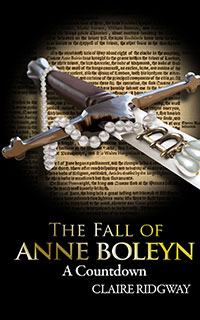 Just as the Grand Jury of Middlesex met at Westminster on 10th May 1536, the Grand Jury of Kent met on 11th May in front of Chief Justice John Baldwin and six of his colleagues at Deptford. They met to rule on the alleged crimes committed at Greenwich Palace, East Greenwich, and Eltham Palace by Queen Anne Boleyn, Sir Henry Norris, Sir William Brereton, Sir Francis Weston, George Boleyn (Lord Rochford) and Mark Smeaton. Unsurprisingly, this was a repeat of the previous day’s meeting and it was ruled that the Queen and the five men would stand trial.
Just as the Grand Jury of Middlesex met at Westminster on 10th May 1536, the Grand Jury of Kent met on 11th May in front of Chief Justice John Baldwin and six of his colleagues at Deptford. They met to rule on the alleged crimes committed at Greenwich Palace, East Greenwich, and Eltham Palace by Queen Anne Boleyn, Sir Henry Norris, Sir William Brereton, Sir Francis Weston, George Boleyn (Lord Rochford) and Mark Smeaton. Unsurprisingly, this was a repeat of the previous day’s meeting and it was ruled that the Queen and the five men would stand trial.
The alleged offences were the same as the Middlesex indictment – seduction, adultery, incest, jealousy, plotting to kill the king etc. – just at different venues, so it is no wonder that the jury decided to send it to trial after the previous day’s decision.
In my book, I look at the dates given in the indictments for the alleged offences and how nonsensical they were, in that Anne and the man in question weren’t even in the place mentioned or Anne was recovering after giving birth. But the catch-all phrases “and on divers other days and places” and “on several days before and after” meant that if the dates were challenged then the indictment was still valid. Interestingly, the date that Anne Boleyn argued with Sir Henry Norris and accused him of looking “for dead men’s shoes”, the 30th April, is not in the indictments, yet Anne admitted to talking to Norris on that day and mentioning the King’s death. Odd!
Also, sometime shortly before their trials, Anne Boleyn, George Boleyn, Sir Henry Norris, Sir Francis Weston, Sir William Brereton and Mark Smeaton were visited in the Tower of London by members of the King’s council. The Spanish Chronicle records that Thomas Cromwell, the Duke of Norfolk, Chancellor Thomas Audley and Archbishop Cranmer were the ones chosen for this mission and were ordered by the King “to treat her with no respect or consideration”. It also records an angry exchange of words between Cranmer and the Queen, with Anne accusing the King of wanting to get rid of her because he was in love with Jane Seymour.

‘to treat her with no respect or consideration’, sounds very much like someone trying to ease their conscience by having Anne brow beaten and tricked into saying things that would prove her guilty as accused…he obviously under estimated Anne’s resilience, intelligence and knowledge on how matters such as these were conducted and achieved the wanted outcomes, after all she had been at Henry’s side long enough to know how he and his concillors worked. How foolish and self deluded these men were.
“To treat her with no respect or consideration”! This poor lady was doomed the moment her stillborn male baby was born! Had she had a living and healthy son, imagine how different history would have been. Alas. Have any of you ever thought that had Queen Anne had a healthy outcome of her last pregnancy (bearing a healthy male heir)…Anne’s life would doubtless have been saved (even if she was eventually put aside)…but we probably would have never had the awesome Queen Elizabeth I?! Crazy.